Abstract
1. The antagonism at α-adrenoceptors by thymoxamine and phentolamine of the response to noradrenaline was investigated in the limb veins and arteries of man.
2. Brachial artery infusions of thymoxamine (40 μg/min) produced rises in resting arterial flow of up to 100%. When infused mixed with noradrenaline, thymoxamine (40 μg/min) attenuated the blood flow response to noradrenaline. Blockade was of a similar degree to that which occurred following a 10 min infusion of phentolamine (40 μg/min).
3. Local intravenous infusion of thymoxamine (400-2,000 ng/min) mixed with noradrenaline attenuated the venoconstrictor response to noradrenaline. The degree of attenuation was similar to that seen after a 10 min infusion of phentolamine (500 ng/min). Blockade after thymoxamine did not last longer than 16 minutes. Neither thymoxamine nor phentolamine altered resting venous compliance.
4. Local intravenous infusions of thymoxamine (500 ng/min) and phentolamine (500 ng/min) abolished the sympathetically mediated venoconstriction produced by overbreathing.
5. Systemic injection of thymoxamine (0·1 mg/kg) did not block the reduction in forearm arterial flow produced by locally infused noradrenaline. In two out of three experiments, however, it produced some antagonism of noradrenaline induced venoconstriction. Systemic phentolamine (5 mg) blocked the effect of noradrenaline in the arterial bed, but antagonized its actions in the veins in only one out of three experiments.
Full text
PDF
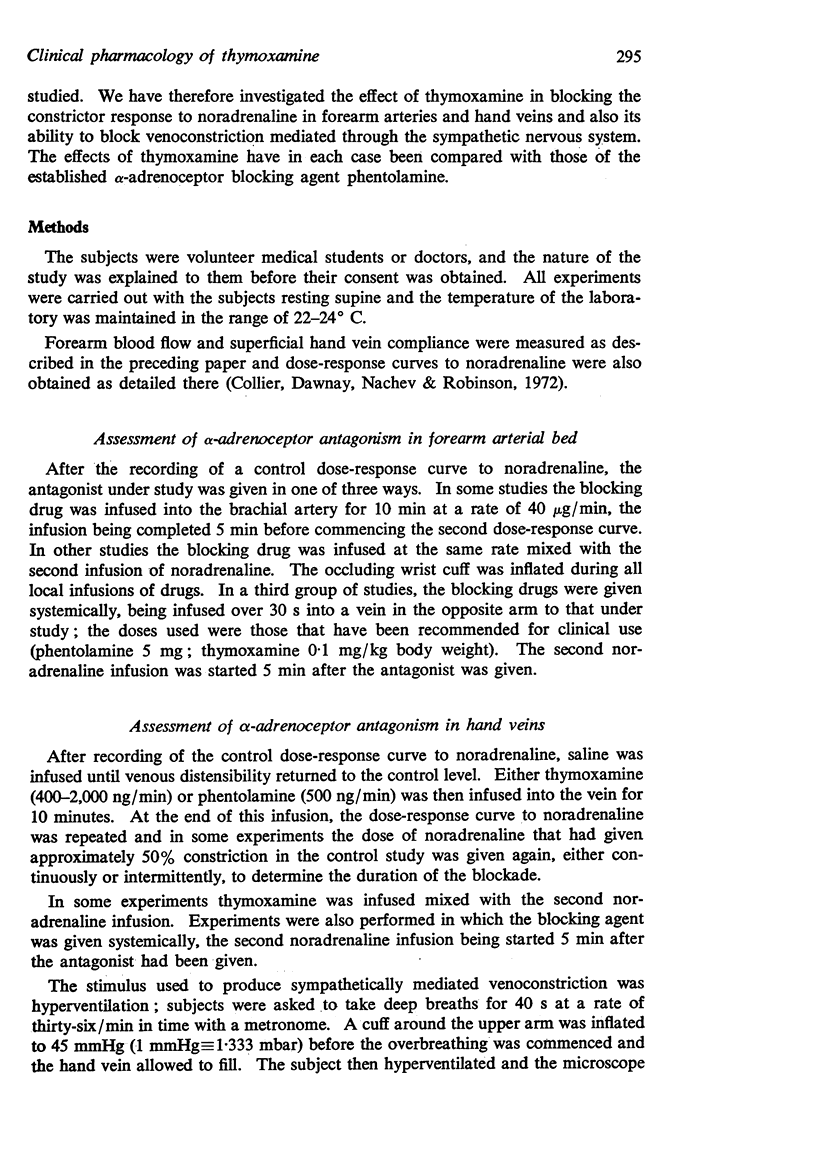
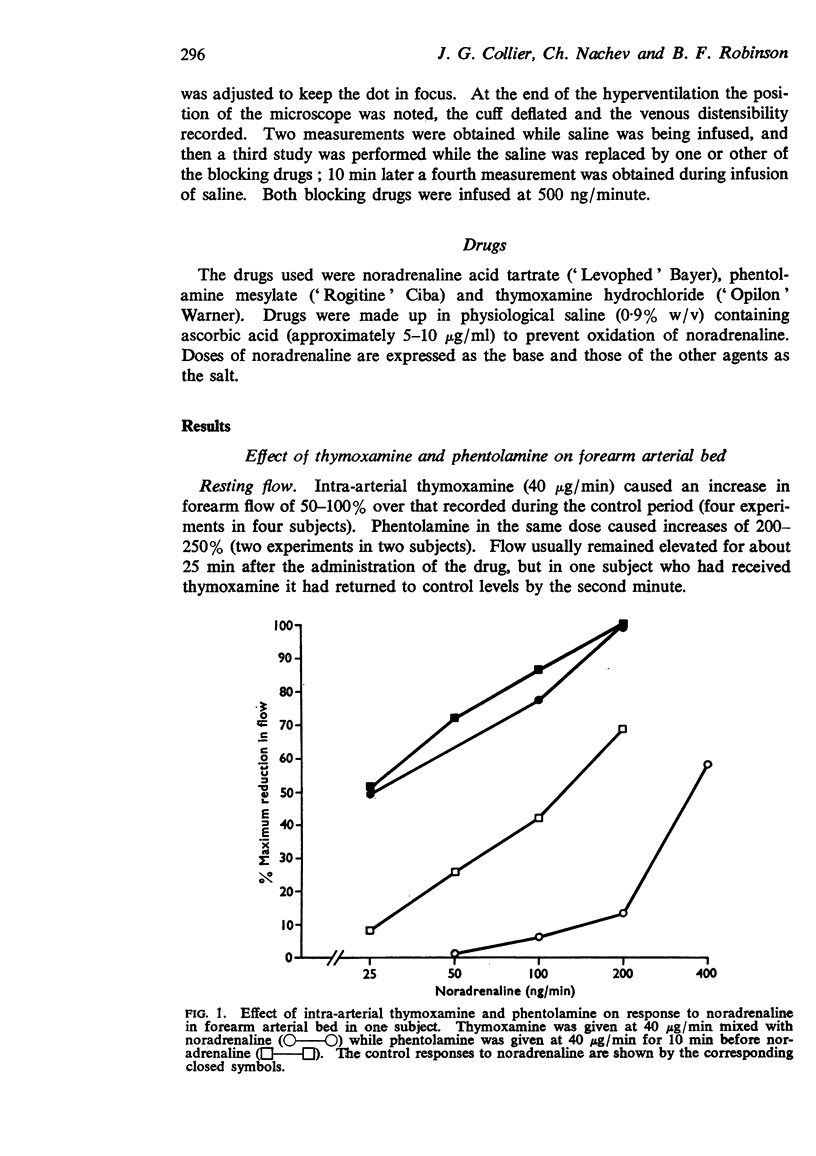
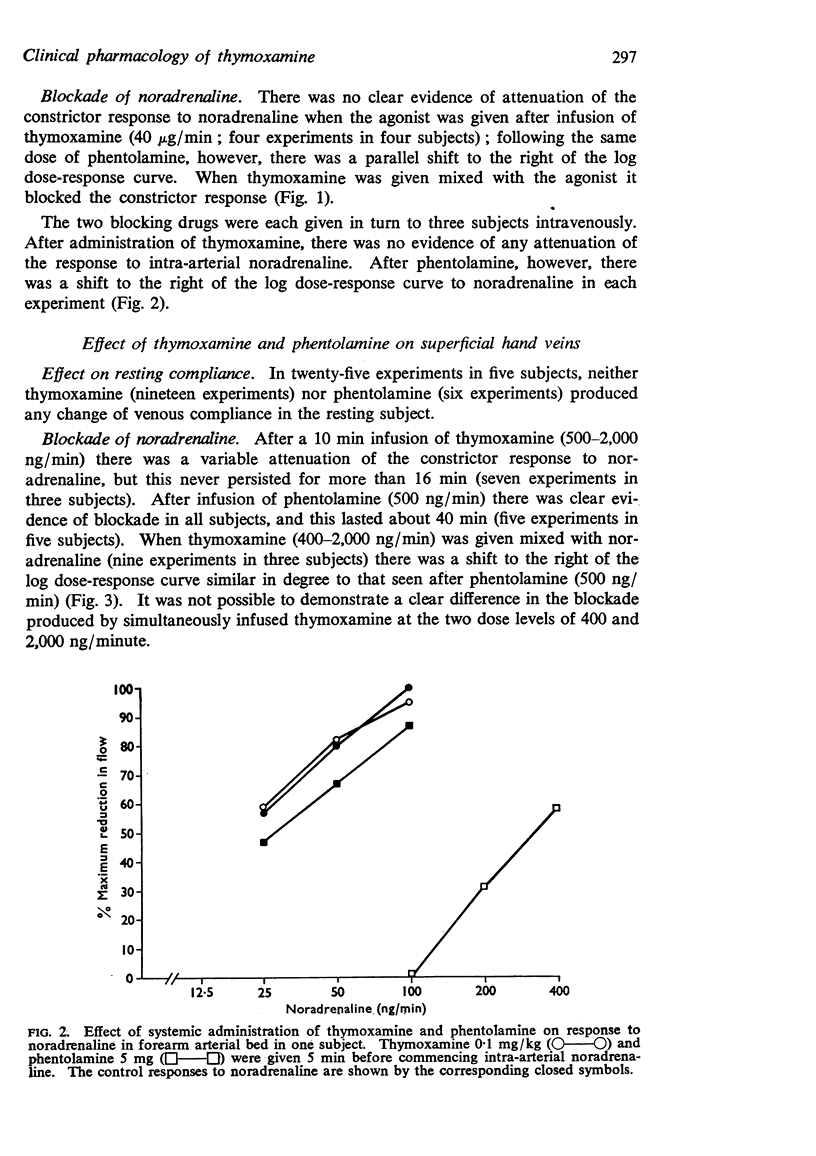
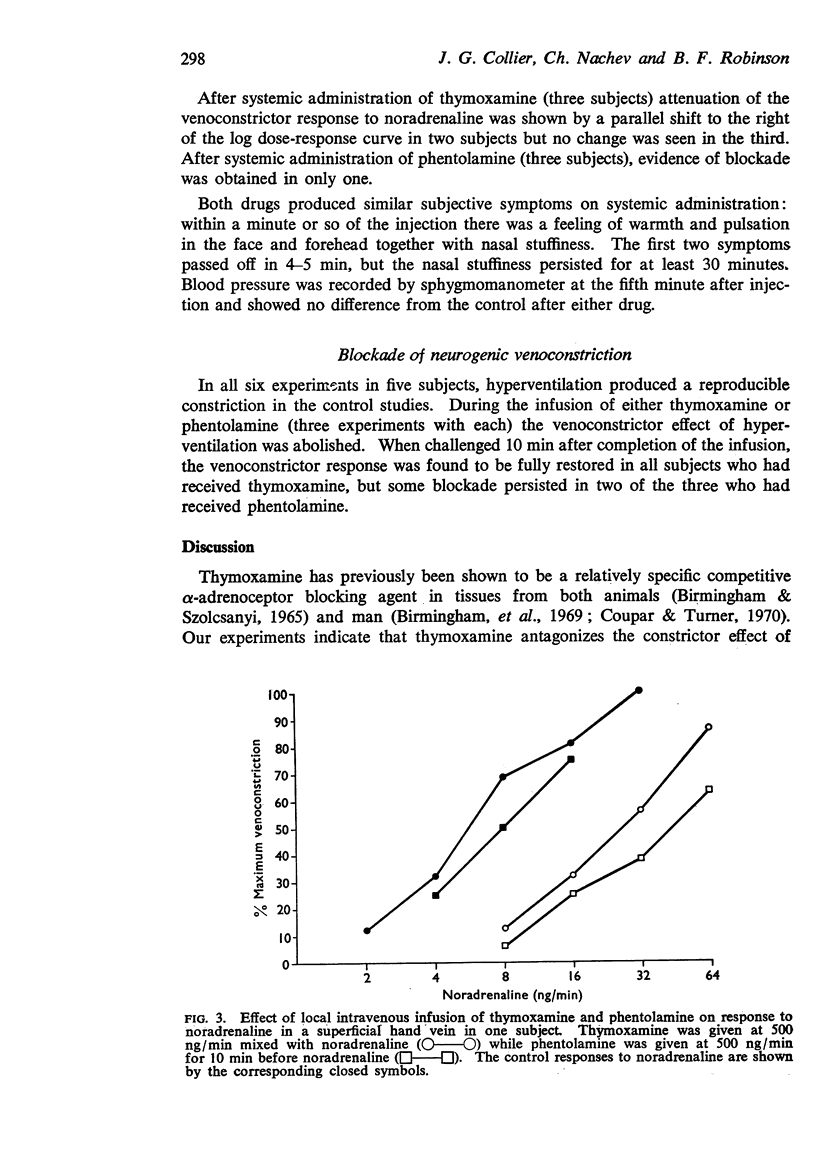

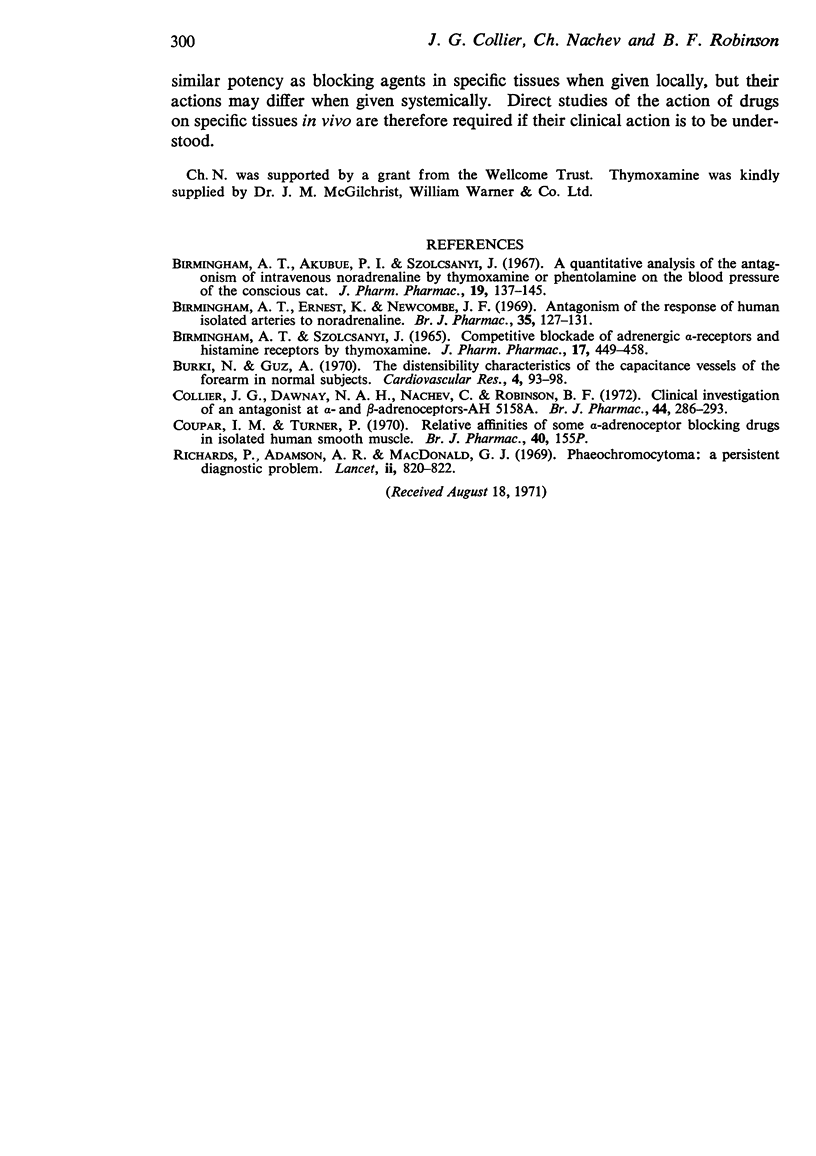
Selected References
These references are in PubMed. This may not be the complete list of references from this article.
- Birmingham A. T., Akubue P. I., Szolcsányi J. A quantitative analysis of the antagonism of intravenous noradrenaline by thymoxamine or phentolamine on the blood pressure of the conscious cat. J Pharm Pharmacol. 1967 Mar;19(3):137–145. doi: 10.1111/j.2042-7158.1967.tb08055.x. [DOI] [PubMed] [Google Scholar]
- Birmingham A. T., Ernest K., Newcombe J. F. Antagonism of the response of human isolated arteries to noradrenaline. Br J Pharmacol. 1969 Jan;35(1):127–131. doi: 10.1111/j.1476-5381.1969.tb07973.x. [DOI] [PMC free article] [PubMed] [Google Scholar]
- Birmingham A. T., Szolcsányi J. Competitive blockade of adrenergic alpha-receptors and histamine receptors by thymoxamine. J Pharm Pharmacol. 1965 Jul;17(7):449–458. doi: 10.1111/j.2042-7158.1965.tb07701.x. [DOI] [PubMed] [Google Scholar]
- Burki N., Guz A. The distensibility characteristics of the capacitance vessels of the forearm in normal subjects. Cardiovasc Res. 1970 Jan;4(1):93–98. doi: 10.1093/cvr/4.1.93. [DOI] [PubMed] [Google Scholar]
- Collier J. G., Dawnay N. A., Nachev C., Robinson B. F. Clinical investigation of an antagonist at alpha- and beta-adrenoceptors-AH5158A. Br J Pharmacol. 1972 Feb;44(2):286–293. doi: 10.1111/j.1476-5381.1972.tb07265.x. [DOI] [PMC free article] [PubMed] [Google Scholar]
- Coupar I. M., Turner P. Relative affinities of some alpha-adrenoceptor blocking drugs in isolated human smooth muscle. Br J Pharmacol. 1970 Sep;40(1):155P–157P. [PMC free article] [PubMed] [Google Scholar]
- Richards P., Adamson A. R., Macdonald G. J. Phaeochromocytoma: a persistent diagnostic problem. Lancet. 1969 Oct 18;2(7625):820–822. doi: 10.1016/s0140-6736(69)92274-0. [DOI] [PubMed] [Google Scholar]


